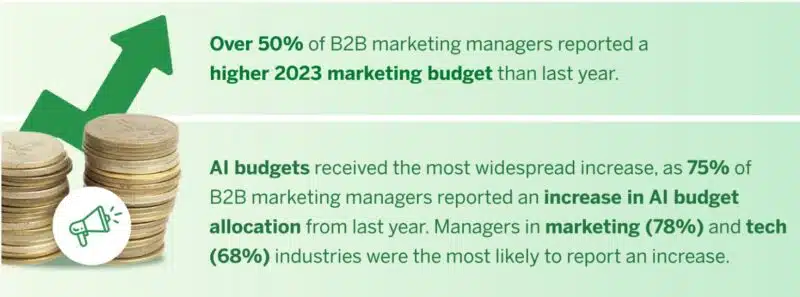As a leader, you’re subject to intense scrutiny. In high-stress and high-stakes moments, you’ve undoubtedly put your “game face” on and played the role of the undaunted leader. But these are the moments when courageous leaders do something counterintuitive: they open themselves up and disclose their thoughts and feelings. And as they do, they strengthen their teams and relationships.
At its core, disclosure is about revealing aspects of yourself others wouldn’t know about unless you told them.
But the term comes with lots of misunderstandings. Rest assured, disclosure doesn’t mean telling people your private business, becoming best friends with people at work, or going out for drinks with your team.
Disclosure is also not about pretending, manipulating or controlling others. The point of disclosing isn’t about getting something from others.
Instead, disclosure involves authentically deepening your connections with the people you lead. In day-to-day life at work, disclosure involves lots of small actions that reveal who you are, what you think, and how you feel. It’s ongoing and not limited to high-risk, high-reward situations.
To develop higher-quality relationships, disclosure should include certain basic features:
- It must be authentic and genuine.
- It must be truthful and honest.
- It must be spontaneous rather than calculated.
- It must be personal.
- It must reflect a shared human experience.
Disclosure plays out much more powerfully in real life than this list of basics might suggest. These four tips will help you self-disclose more comfortably.
1. Share Your Story
Take the initiative to share information about your personal experiences and professional journey in conversations and group meetings when the moment is right. This will have a positive impact on the people around you.
For example, physicians who reveal their own experiences improve patient satisfaction, increase patient adherence to treatment, and decrease the likelihood of being sued. Teachers who share their experiences, academic hardships, and even professional struggles improve their students’ learning.
Sharing your story creates more trust and better working relationships.
One recent study found that in small working groups, “revealing personal information encourages others to do the same, thereby facilitating mutual exchange of personal information between teammates, [and it] improves the quality of relationship they have with each other.”
2. Talk About Past Difficulties
If you’re feeling courageous, you may want to share your hardships, challenges, weaknesses and mistakes.
This may feel like the last thing you should do, but German researchers found that “disclosing personal information and revealing weaknesses provides room for mutual trust to develop which, in turn, encourages teammates to feel free (and safe) to express themselves.”
Author and executive coach, Allen Weiner, for instance, talks about sharing his “foibles,” or small weaknesses, with direct reports, colleagues, and high-profile clients in his book, So Smart, But. “When I talk about mine, people talk about theirs,” Weiner explained. “Sometimes that helps us make a connection. . . . Most of the time, the person I’ve been talking with [about my weakness] will say, ‘Don’t be so hard on yourself. I can get you one better.’”
To get started, discuss difficult moments you’ve faced. You can talk about both positive and negative experiences you’ve had throughout your professional career. Importantly, when others share information about themselves, you can reciprocate and disclose similar information.
3. Reveal Your Emotions and Thoughts
Part of what decreases our connection with others is our tendency to put on our game faces and hide how we feel or think. But when we put on a mask or play a role, it communicates uncertainty and makes it difficult for other people to know how to respond.
The fix? Disclose your thoughts and emotions more transparently. Remember, emotions are human. Others expect you to have a point of view.
You can practice expressing the emotion you’re feeling by completing the statement: “I feel. . .” with a statement of the actual emotion. Consider some examples:
- “I feel happy about the success of our training.”
- “I feel frustrated about the breakdown in communication that’s taking place across the organization.”
You can express your thoughts in a similar way:
- “I think we’re making great progress.”
- “I think we should be moving toward a clear decision more quickly than we are.”
If you reveal your emotions and thoughts in a composed and professional way like this, you’ll start difficult conversations on the right foot.
4. Express Your Gratitude
Disclosure also means expressing our gratitude. Gratitude calls on us to realize that our well-being, accomplishments, and success are always shared and depend on others’ help.
Gratitude strengthens our sense of connection and increases the comfort we feel with others. You can communicate your appreciation one-on-one, with a handwritten note, publicly in a group setting, or through all three of these communication channels.
In fact, you can do it right now. Take a moment to identify someone you work with for whom you are grateful. Prepare a text message for this person using these lead-in prompts:
- Start like this: “I’ve been thinking of you and wanted to tell you . . .”
- Next, give one or more specific examples of what you’re grateful for.
- Finish your message with a direct statement of gratitude: “. . . how grateful I am for the great work you’ve been doing on this project and for the support you’re providing to the team.”
Put it all in your own words so it sounds like your voice. Once you’ve written the message, press send.
Right before sending this text, you might feel a small moment of hesitation. What you’re feeling is very likely a sense of vulnerability. That’s the feeling that comes with taking a risk. Be courageous and press send anyway.
The Teams We Lead Expect Openness
Today’s workplace cultures have developed to the point where the teams we lead expect a certain amount of openness from leaders. When we don’t disclose, they’ll notice something missing and draw conclusions.
Though it may feel unnatural and riskier than other leadership practices, make a conscious choice to be more transparent. The benefits of disclosing—including deeper relationships and improved team effectiveness—are well worth the effort.
The post 4 Ways To Open Up—And Become A Better Leader In The Process appeared first on ChiefExecutive.net.
























































![Key Metrics for Social Media Marketing [Infographic] Key Metrics for Social Media Marketing [Infographic]](https://www.socialmediatoday.com/imgproxy/nP1lliSbrTbUmhFV6RdAz9qJZFvsstq3IG6orLUMMls/g:ce/rs:fit:770:435/bG9jYWw6Ly8vZGl2ZWltYWdlL3NvY2lhbF9tZWRpYV9yb2lfaW5vZ3JhcGhpYzIucG5n.webp)


















